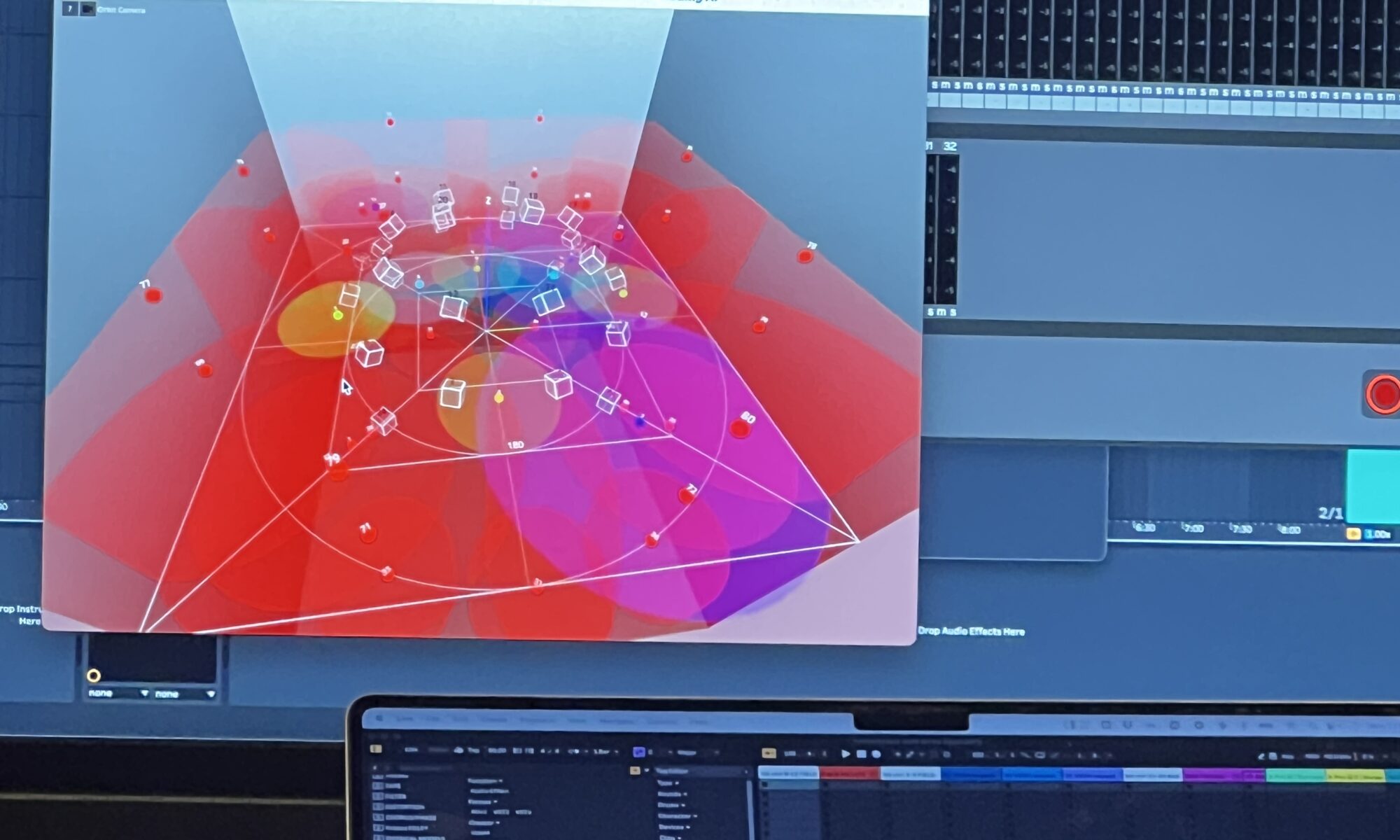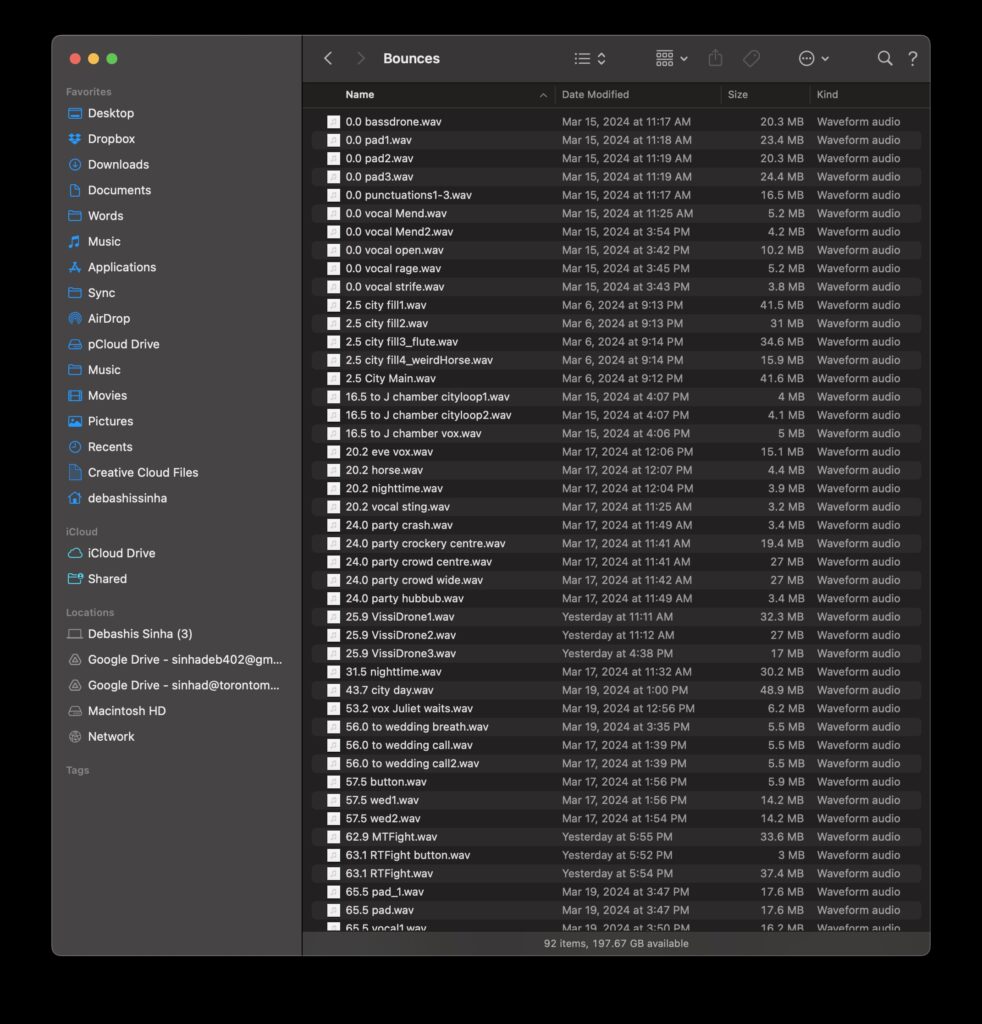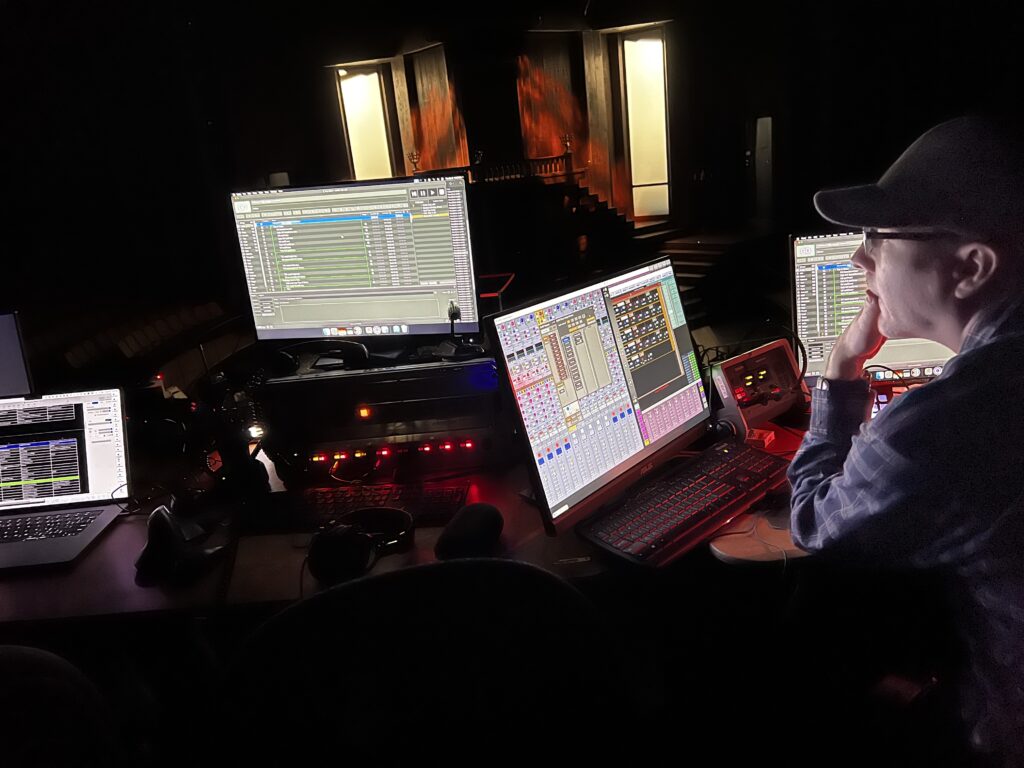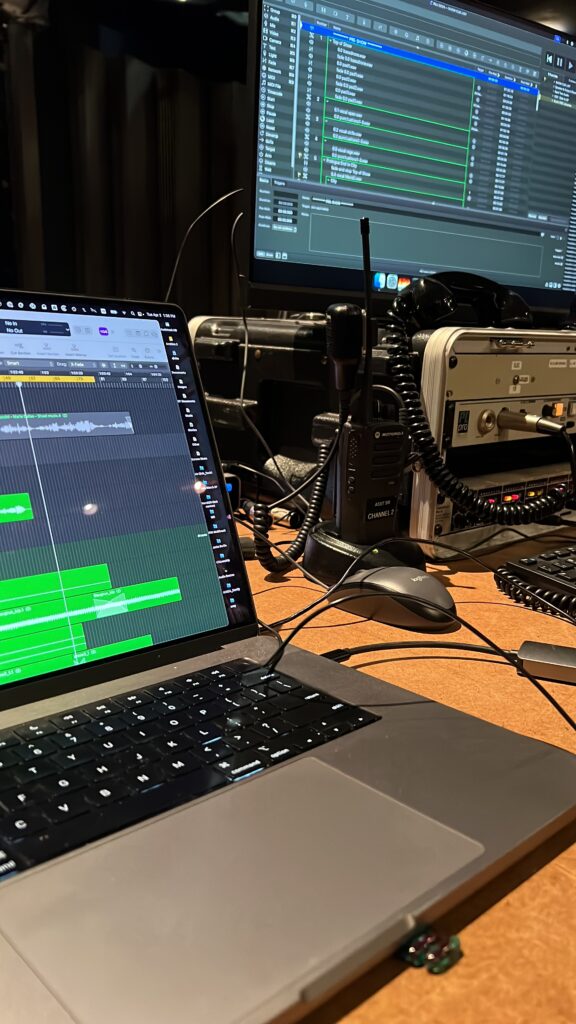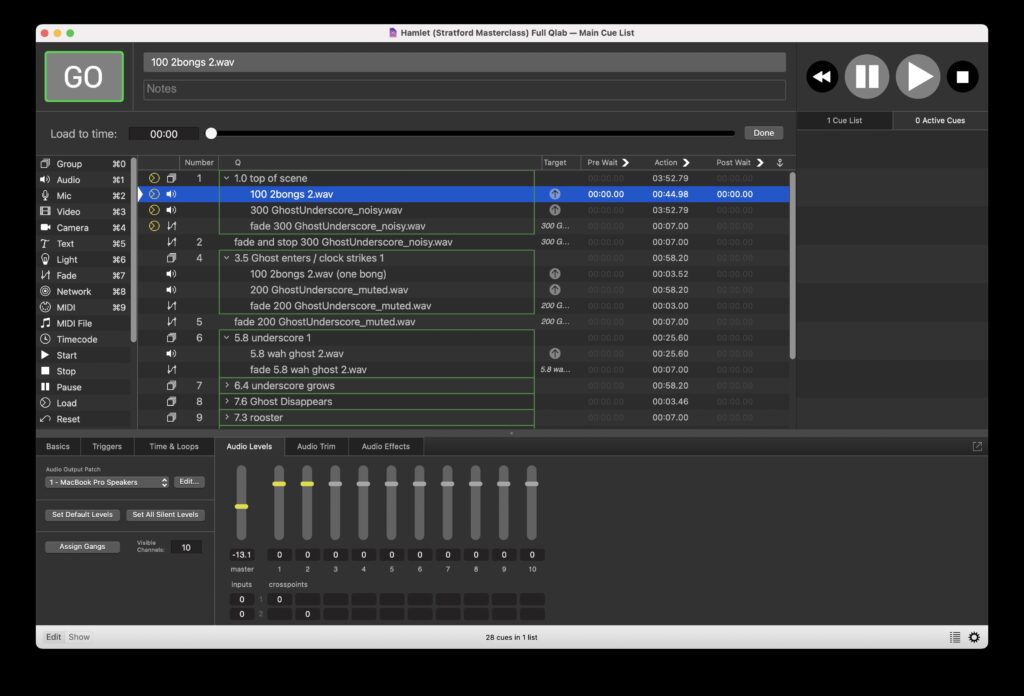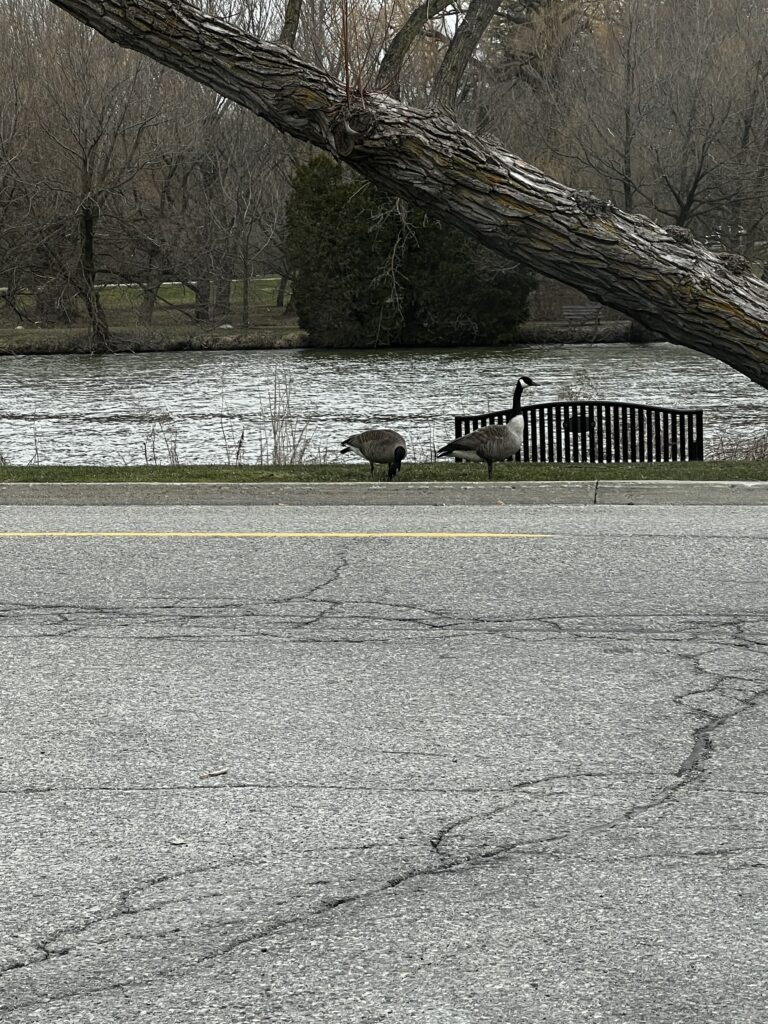(note: we were all asked to draft some remarks on being named finalists for the prestigious Siminovitch Prize for theatre, 2024 – there are mine. To watch the documentary on my work by VideoCompany, please see here.)
What an incredible honour to be part of this stellar cohort of finalists. I am still a little disoriented at being part of this group. Sonoyo, Itai, Pete, Pityoo and Judd, I am so grateful and honoured to be in the same breath as you all.
There’s a lot I could talk about for these remarks, but I want to talk about sound, because to me the ways I think about it, the ways we can work with it, bring us around to all the things we need to talk about, everyday.
As I wrestle with the sometimes transcendent, sometimes prosaic considerations that make up the life of a theatre composer and sound designer, I come again and again to this belief: that sound is magic. The magic it possesses is latent, secret and all- encompassing, and in theatre in particular it is revealed through listening together – together with the director, with the actors and designers, with the support staff and the others coming through the buildings where we practice. It reveals itself also slowly as I work alone in my studio, searching for different sounds and melodies, the right reverb, the right door sound as I try to make audible what Roland Barthes calls “the underside of meaning”, try to make audible the relationships unfolding through the text and through the people that speak and move with it. The process of searching for and finding the magic I can only dimly sense, but becomes fully revealed through the experience of working with others, bringing a story to life.
Working in theatre has given me the opportunity to aim the magic of sound at the things I value as a living being on this planet: Connection. Humility. Joy and play. Empathy. Collaboration. Collective action. I try to make my work with sound about instinct, and improvisation, and trying, and failing, but mostly about listening. In the theatre space I’ve found a place where I can practice listening, and through listening I have discovered I can practice being a force for good in the world. In theatre I have found a place to develop those muscles that have the potential to bring good into being, and then take those muscles out into the streets, into all the moments and rooms and spaces of my life. In my time in the performing arts, I’ve come across so many good, good hearts that have sung to me in ways I didn’t expect, and been challenged by hearts that don’t resonate with mine. And each encounter solidifies my sincere belief in the work we do in our theatre spaces and how we can apply it to the world.
To make theatre well, we must invoke community – the people in it, of course, but also the larger community of makers, the audience, and the human and nonhuman communities of our city, our town, our country, our world. In these invocations we highlight and acknowledge our interconnectedness. The collective experience of the rehearsal hall and the stage resonates out and through the walls, an Aurora Borealis of heart and spirit that touches all who pass by, that moves through and across the planet and ever outward. Of all that I’ve learned through my work in theatre over these past years, community is the most valuable lesson.
But still, we must wrestle with this inescapable fact: theatre won’t save the world. It won’t directly solve the problems of state, of politics, of intractable ideology, or of evil. It won’t make someone who thinks I am or you are not deserving of space or human rights or even life suddenly change their minds. Listening doesn’t mean listening without boundaries, or without aspiration, or listening to those who have no desire to listen. We still need to make space for agitation, for hugs, mass protests, unions, strikes, sit-ins, letters to our representatives, tears, smiles, boycotts, difficult conversations around the dinner table or on walks in the woods. In our rehearsal halls we still need to strive to build practices of realistic care, honest care, and to live with and through the frictions and the falling short. And we do fall short, everyday, because we want to hug the sky.
Every project holds lessons where we learn and unlearn what it means to make and take space, and to experience processes of collaboration with all their hard and smooth edges. I’ve been invited and trusted to be in rooms where stories are being told that were only dimly adjacent to my own experience in this body on this earth, and sometimes to contribute to stories that could not possibly be part of my experience in the world. I cherish that trust, and in the effort to live up to it I trust my listening ear and my listening body. If I listen – to the text, to the people, to the ideas and the silences – the needs of the story will reveal themselves, and I will be able to cradle them and lift them up on a bed of sound. Theatre won’t ever, ever be enough, and that’s ok, because even so it can be a part of what is enough. Because theatre is a place where we gather, where we tell stories and breathe together, and that is something that lends more power to all the things we dream up to fix the world.
To the Siminovitch Foundation staff, its supporters, the jury and my supporters – particularly Peggy Baker for the nomination – thank you. You have made this moment the new pinnacle of a process of joy, terror and introspection that has lasted since my 12 year old self tried setting up my drums backwards in our Winnipeg basement to see what would happen when I tried to play along to English Beat records. I want to also thank my mother, who introduced me to the stage and continues to show me the power of storytelling; my sister, whose fierce and constant love of theatre finally brought me to those stages in a serious way; and to my father, who stood by us all, every day bewildered but understanding. To the people I have worked with: every single one of you taught me something about myself, about being and working together, about listening, and about striving for excellence. Every. Single. One.
Finally, I wouldn’t have been able to share what I have shared with you today, discover what I’ve discovered for myself without my wife Jutta and my daughter Leena. They have stood by me through everything, even when they didn’t know I needed someone to stand by me. They’ve helped me practice and embody the good things about living a life in art, and have had the patience to let me work out the difficult things about living a life in art. You listened to my ideas and sounds and gave me advice (looking at you, Leena) on how to make it better. You handled the home during my life on the road, you came to my shows and helped me carry gear, and you loved me every day through all of it – I could not have been able to do anything even approaching what I’ve done without you both. This honour is yours as much as mine.
“Art is a situation”, says the Syrian-Yemeni poet Jalal Al-Ahmadi. How will we meet it? The answer changes everyday, and that is what keeps me, keeps all of us here, celebrating the power and the joy of the telling of stories. I’m so glad we are together to honour the process of making sense of the world together.
The stories that hum in our lives will never cease. May we always be open to their power.

